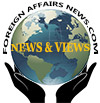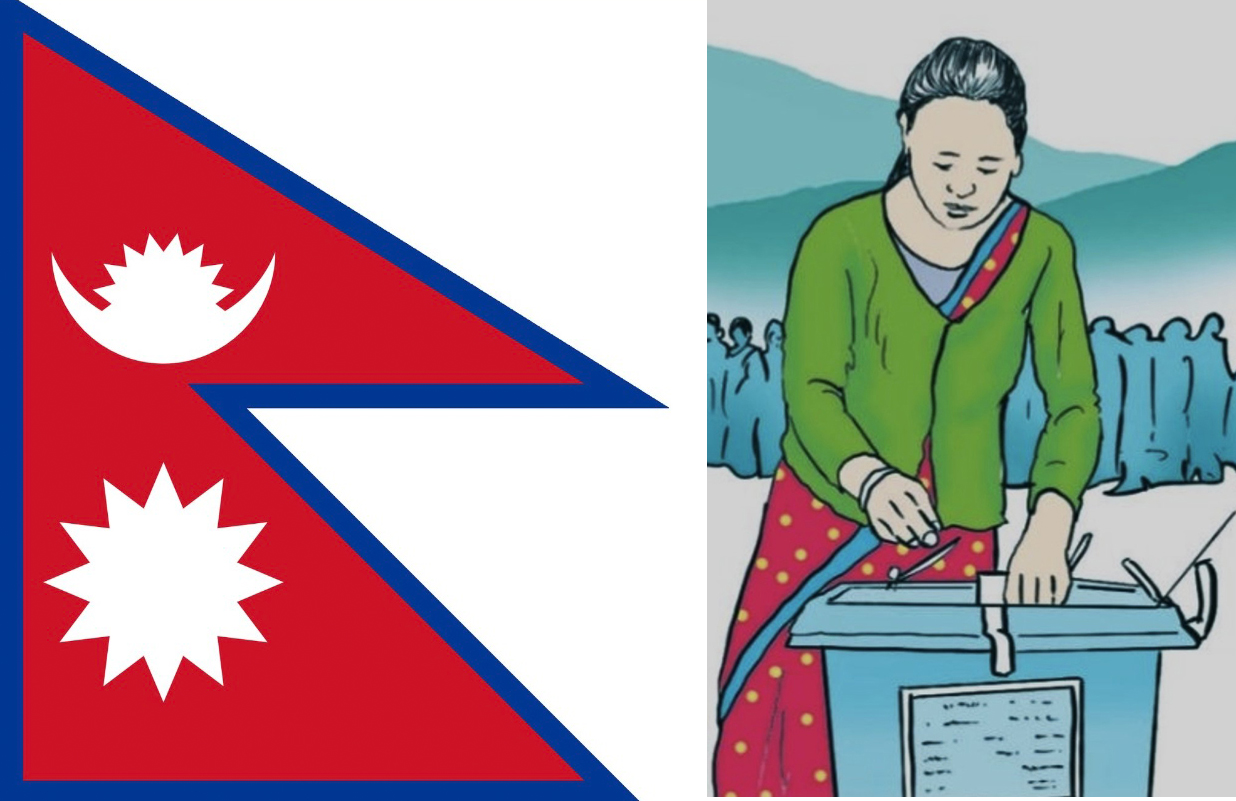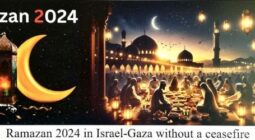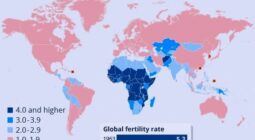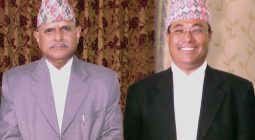All Nepalese citizens eligible to vote are casting their ballots today-Sunday for the Federal Parliamentary elections with multiple parties running neck and neck amid global economic headwinds to determine which party is to be handed a fresh five-year mandate to govern the country.
Thousands of candidates from youngest to oldest are battling for 165 first-past-the-post voting and 110 for proportional parliamentary seats.
According to the observers, analysts, none of the major big parties–Nepal Congress, NCP-UML or NCP-Maoists on track to win at least half the seats, needed to form the next government.
As no single party is expected to secure the necessary majority to form a government as voters are divided, after the federal elections of Sunday, it is expected that there will be no calm but instead the political instability will grow that the country has suffered since many years of period during which there have been seen multiple numbers of governments since the first election after restoration of democracy in 1990.

As Professor James Chin said, “Election is a game of thrones all over again. “Election” and “Power” are the two heavy words during the polls as candidates try to woo voters.
Nepal gears up for a high-stakes 2nd General Election after promulgation of Constitution of Nepal on September 20, 2015 replacing the Interim Constitution of 2007.
In general view, the voters are not excited to cast their votes in the upcoming election as the previous winner leaders of the political parties have not given positive results to the people in terms of development, implementation of regulations, controlling the corruption and many more they promised before the elections.
Thus, amid a crowded election field, what might voters expect when the main coalition leaders all belonged to then split off from the same party?
However, the analyst believes that Nepal’s 2nd General Election is expected to be a closely fought contest, with some observers saying that only with the small numbers of votes differentiate among the candidates the winner in this election will be able to garner a very small portion of votes on November 20.
In these elections, the five political parties — democratic party Nepali Congress, soft-line leftist Nepal Communist Party-Socialist, so called hardline leftist Nepal Communist Party-Maoists, Rastriya Jana Morcha and south-belt based Loktantrik Samajabadi Party are heading with coalition.
On the other side, Nepal Communist Party- Unified Marxists & Leninist, Hinduism and royalist agenda holder Rastriya Prajatantra Party, south-belt based political ideology Janata Samajabadi Party along with other small name only parties are joining hands making coalition against five parties’ group.
Also, there are many other small weighted parties and independent candidates fraying in the polls.
The Nepali Congress led coalition has seating Prime Minister and president of Nepali Congress Party Sher Bahadur Deuba along with former prime minister Pushpa Kamal Dahil-Prachanda of Nepal Communist Party-Maoist, former prime minister Madhav Kumar Nepal of Nepal Communist Party -Socialist and ex-deputy prime minister Chitra Bahadur KC of Rastriya Janamorcha and ex-minister Mahanta Thakur of Loktantrik Samajabadi Party who all are also in the race.
In other side, UML led coalition by ex-prime minister and chairman of Nepal Communist Party-UML Khadga Prasad Oli has former deputy prime minister Upendra Yadav of Janata Samajabadi Party, ex-Member of Parliament and chairman of Rastriya Prajatantra Party Rajendra Lingden along with other small names are grouped.
Both the coalition groups are looking to take the biggest share of the federal seats available to form the next government.
All of them are also vying for the parliamentary seats. Though, the elections are of course an interesting event but this time the mixing of right and left, north and south is going to be interesting from the perspective of multi-cornered fights in a fragmented political landscape.
This is probably the first election in Nepal’s history where we see such an array of contestants coming from mixed political ideological-based political parties. So, it would be a very interesting political scenario that could be called unprecedented in Nepal and Nepalese are waiting to see the “Political Romanticism.”
According to the Constitution, Nepal’s Federal Parliament (House of Representative) has 275 seats. But only 165 constituencies’ seats are being contested through first-past-the-post voting whereas the 110 members would be elected through the party list proportional representation system.
Thus, parties needed to clinch at least 138 seats with a simple majority to form a government.
Political observers are expecting an intense contest for the rural areas votes that is likely to be decisive in determining who forms the next government.
The political pundits also believe that even though the parties have a coalition, there will be tough battles in most urban areas as the voters are concerned about their ideologies.
They might not go simply along with the instruction of coalition instead the vote will likely be split with the multi-cornered contests.
Major political parties in Nepal are still led by male leaders who want to stay in power, and the representation of women is just not prioritized.
Though the constitution has guaranteed 33 per cent women in every field where women make up more than half of registered voters in the country, Nepal is still among the nations with the lowest proportion of female parliamentarians.
In Nepal, the political culture has been very much based on a patriarchal system for a long time, as such, it is not uncommon for political parties to exclude women, and prevent them from playing more active or prominent roles.
Nepal is still a patriarchal society, still people continue to hold the idea that it is the women’s responsibility to be at home and focus on childcare, and there isn’t time to participate in politics.
Thus, changing this mindset will require both top-down and bottom-up approaches, experts say. Men will have to begin seeing women as equal partners in dealing with women’s issues.
Leaders from various political parties today were all on the same page in their commitment to achieving the target of fielding 33 per cent women candidates in elections, in turn increasing female representation in the country’s legislative bodies.
UML has picked KP Oli as its next candidate for prime minister and he has been continuing his election campaign in that role saying the opposition coalition has a big chance to win.
However, the other coalition has not decided who is going to be the prime minister. They are saying “we will decide only after the election results.”
But observers believed that Nepali Congress Party might manage to garner more seats. Likewise, the UML also would manage to capture more seats in the elections. As per the observers who are doing surveys throughout the country expect that Nepali Congress Party and CPN UML would go neck to neck.
Both the parties are confident they will win to form the federal government at all.
As the political parties have not made concrete socio-development beneficial promises, the other way of showing unhappiness is for the potential party candidate to stand as an “Independent.” Thus, there are many independent candidates as well as many small new parties promising to deliver all the “promised” they made during the election campaign.
There are also “independents” backed covertly by their parties to show unhappiness with the party leadership over seat negotiations.
No doubt, in Nepal elections are an expensive affair. During this time, it is also believed that black money could be used influencing the voters to win more seats.
Compared to earlier elections of more mass gathering and pasting of pamphlets, the candidates have been using social media and online strategies. This is crucial since they know social media is the most effective way to reach out to the voters, especially youth voters.
Even so, it is also believed that the major established parties of Nepal have been unofficially campaigning with big money flowing down. But the magic may happen on either or the other side.
Also, for new parties and independent candidates, the “finance” being will be their biggest challenge.
In Nepal political parties are notorious for making last-minute big promises that have been included in their manifestos which are just to attract voters. But the current voters could not believe with 100 per cent instead they think the political parties are lying to the general citizens.
In the November 20 General Election in Nepal, the race is highly competitive. Thus, the election of all the constituencies should begin with “free and fair” competition.
